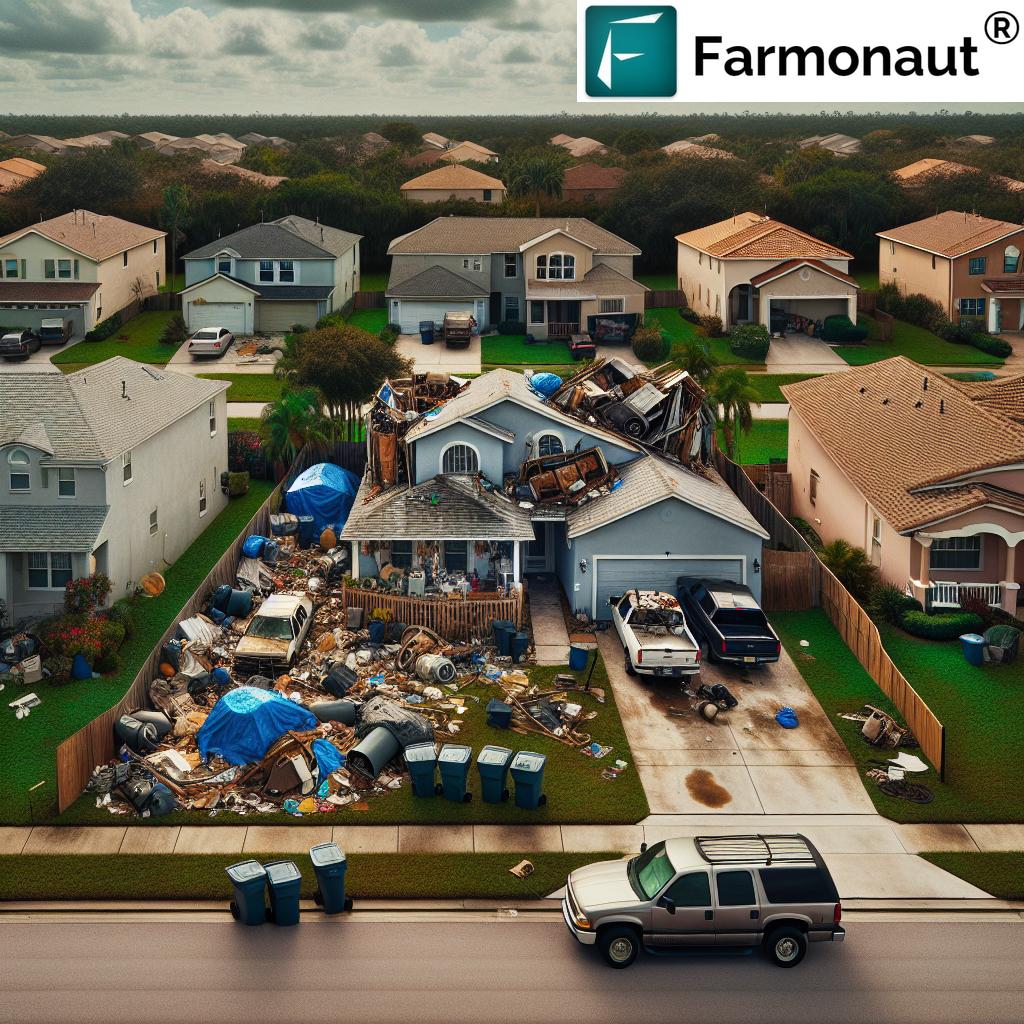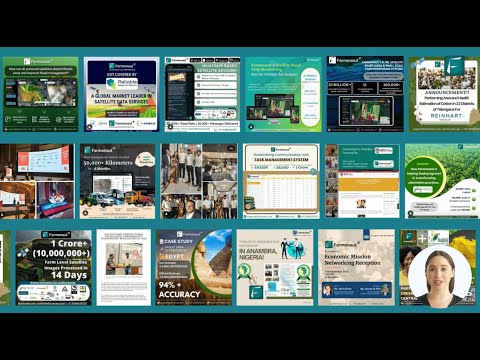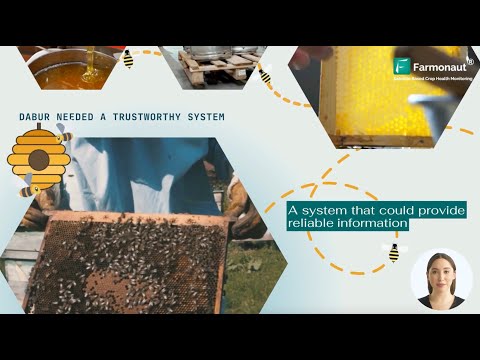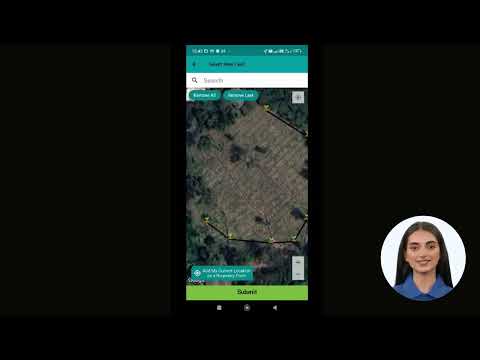Florida’s Property Rights Battle: Navigating Code Violations and Community Standards
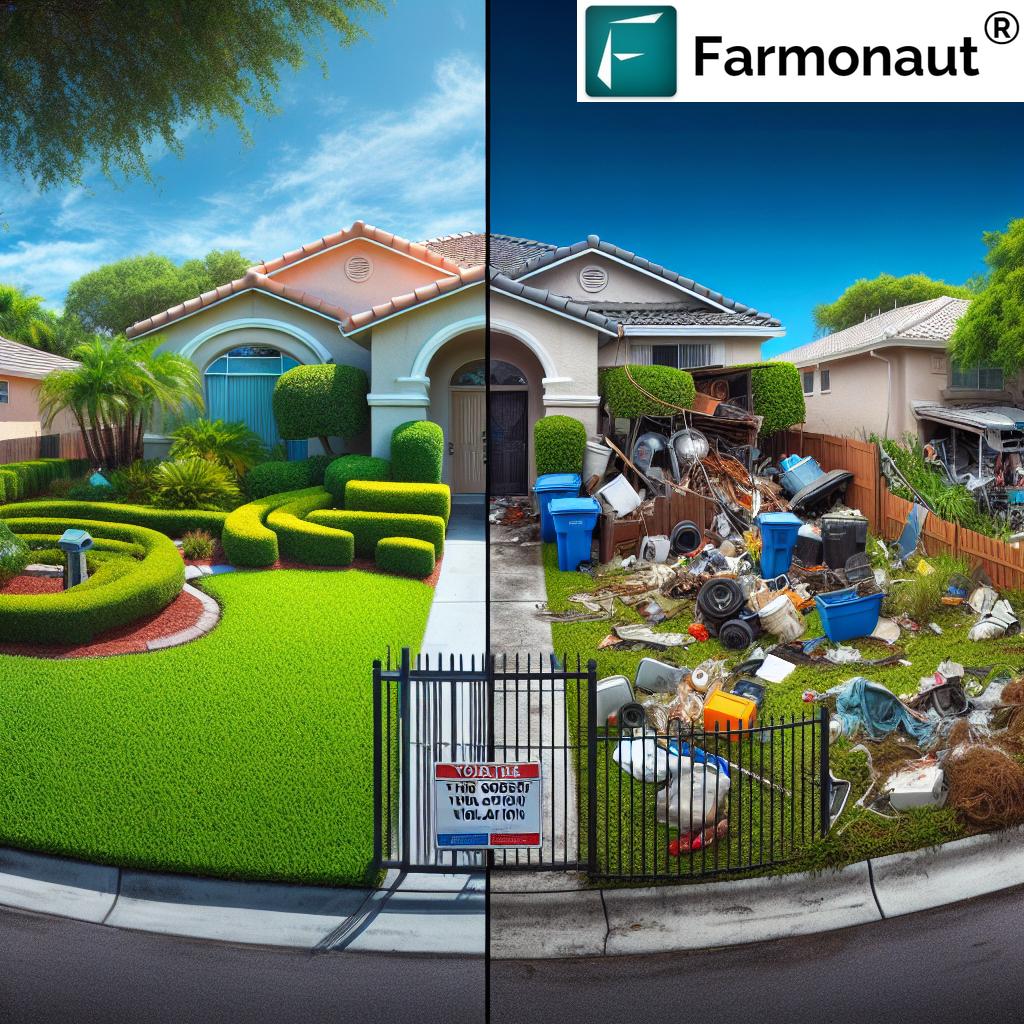
“A Florida property dispute has resulted in millions of dollars in fines over decades of code violations.”
“A Florida property dispute has resulted in millions of dollars in fines over decades of code violations.”
In the heart of Seminole County, Florida, a property rights battle has been raging for over two decades, pitting one man’s personal freedom against local government regulations and community standards. This conflict has not only captured the attention of legal experts and policymakers but has also become a lightning rod for debates on the limits of individual property rights and the role of government in maintaining community welfare. As we delve into this complex issue, we’ll explore the various facets of property code violations, junk yard ordinances, and the delicate balance between personal liberty and collective well-being.
The Genesis of a 25-Year Dispute
At the center of this controversy is Alan Davis, a Seminole County resident who has earned the moniker “junk man” due to his unorthodox approach to property management. For a quarter of a century, Davis has been in constant conflict with local authorities over the state of his yard, which he has transformed into what he considers an artistic statement but what officials deem a public nuisance.
The saga began with Davis’s first county code violation, an event he now commemorates annually as a testament to his ongoing resistance. Over the years, his property has become a chaotic display of debris, scrap metal, junked vehicles, and abstract art pieces, including a recent addition of a six-foot-tall fiberglass sculpture depicting human buttocks. This eclectic collection serves not only as an eyesore for neighbors but as a deliberate act of defiance against local government regulations.
The Legal Quagmire
The legal battle surrounding Davis’s property has been nothing short of extraordinary. To date, he has amassed an astounding $5,432,300 in fines from Seminole County due to numerous code violations. These infractions range from unpermitted construction to the accumulation of unsightly refuse, all meticulously documented over the years by county officials.
The first documented inspection that set this legal wheels in motion occurred in April 2000. At that time, county inspectors found Davis’s property littered with “objectionable, unsightly or unsanitary matter” that posed potential health hazards to the community. Since then, Davis has faced a barrage of enforcement actions, including:
- A long-standing open code enforcement case
- Multiple court orders authorizing the county to seize and remove junk from his property
- Conviction under the Florida Litter Law, resulting in prison time
Despite these legal setbacks, Davis remains unrepentant and continues to restock his yard with debris after each county-mandated cleanup, viewing his actions as a form of protest against government overreach.
The Community Impact
The repercussions of Davis’s stand against local ordinances extend far beyond his property lines. Neighbors like David Radosevich have expressed profound frustration over the county’s perceived inability to resolve the situation permanently. Their concerns are not unfounded; the accumulation of debris poses real risks, particularly during severe weather events that could potentially distribute the junk into surrounding properties.
This ongoing dispute raises critical questions about the effectiveness of current property code enforcement measures and the balance between individual rights and community standards. It also highlights the challenges faced by local governments in addressing such violations without infringing on constitutional protections of property rights.
The Legal and Ethical Dilemma
At the heart of this conflict lies a fundamental tension between two core American values: the right to personal property and the need for community welfare. On one side, we have Davis, who asserts his constitutional right to use his property as he sees fit, free from government interference. On the other, we have local authorities and neighbors who argue that such freedom must be balanced against the collective right to a safe, clean, and visually appealing neighborhood.
This case brings to the forefront several key legal and ethical questions:
- Where should the line be drawn between personal property rights and community standards?
- How can local governments effectively enforce property codes without overstepping constitutional boundaries?
- What role should state laws play in resolving such conflicts in residential neighborhoods?
- How can the rights of individual property owners be balanced against the welfare and property values of their neighbors?
The Enforcement Challenge
Seminole County officials find themselves in a difficult position. While they are aware of and sympathetic to community concerns, they are limited in their enforcement capabilities by existing state laws concerning property rights. This limitation underscores a broader issue faced by local governments across Florida and the United States: the need for clearer, more enforceable legislation that addresses the balance between individual property rights and community standards.
The case of Alan Davis is not unique, though it may be extreme. Many communities grapple with similar issues on a smaller scale, highlighting the need for a comprehensive review of property code enforcement strategies and the laws that govern them.
Looking Ahead: Potential Solutions and Policy Implications
As we consider the path forward, several potential solutions and policy implications emerge:
- Strengthening State Laws: There may be a need for Florida to revisit and potentially strengthen its laws regarding property maintenance and code enforcement, providing local authorities with more tools to address chronic violations.
- Alternative Dispute Resolution: Implementing mediation programs or community courts specifically designed to handle property disputes could offer a middle ground between strict enforcement and individual rights.
- Community Education: Proactive education programs on property rights, responsibilities, and the importance of community standards could help prevent future conflicts.
- Innovative Enforcement Strategies: Exploring new approaches to code enforcement that balance punitive measures with incentives for compliance could lead to more effective outcomes.
- Legislative Review: A comprehensive review of existing ordinances and their effectiveness in addressing modern challenges in urban and suburban settings may be necessary.
The Role of Technology in Property Management
While not directly related to code enforcement, it’s worth noting that advancements in technology are playing an increasingly important role in property management and community planning. For instance, satellite-based monitoring systems, like those offered by Farmonaut, are revolutionizing how we approach land management and resource allocation in agricultural settings. While Farmonaut’s focus is on agricultural applications, the principles of using technology for better land management could potentially inform future approaches to urban and suburban property monitoring and code enforcement.
For those interested in exploring how technology can aid in responsible land management, Farmonaut offers a range of tools accessible through their  and
and  .
.
Community Standards vs. Individual Rights: A Comparative Analysis
| Aspect | Property Owner Perspective | Local Government Perspective |
|---|---|---|
| Legal Basis | Constitutional property rights | Local ordinances and zoning laws |
| Primary Concerns | Personal freedom, artistic expression | Community safety, aesthetics, property values |
| Potential Consequences | Fines, legal action, imprisonment | Decreased quality of life, lower property values |
| Proposed Solutions | Less government intervention | Stricter enforcement, updated laws |
| Estimated Fines Accrued | $5,432,300 | |
| Cleanup Costs | Multiple taxpayer-funded operations | |
| Community Impact | Neighbor frustration, potential property devaluation, safety concerns | |
The Broader Implications for Property Rights and Community Standards
The case of Alan Davis and his ongoing battle with Seminole County serves as a microcosm of a larger national debate on the extent and limits of property rights. This conflict touches on fundamental questions about the role of government in regulating private property and the balance between individual freedom and collective welfare.
Several key issues emerge from this case that have broader implications for property rights and community standards across the United States:
- Constitutional Interpretation: The case challenges us to reconsider how we interpret constitutional protections of property rights in the context of modern urban and suburban living.
- Local Government Authority: It raises questions about the extent of power local governments should have in enforcing community standards and how this power should be balanced against individual rights.
- Environmental and Health Concerns: The accumulation of debris and junk on private property isn’t just an aesthetic issue; it can have real environmental and health implications for the broader community.
- Property Values and Neighborhood Cohesion: The impact of one property on the value and enjoyment of surrounding properties is a crucial consideration in these disputes.
- Legal System Efficacy: The case highlights potential shortcomings in the legal system’s ability to resolve long-standing property disputes effectively.
The Role of State Legislation
As local officials in Seminole County have pointed out, their ability to address situations like Davis’s is limited by existing state laws. This underscores the critical role that state legislation plays in shaping the landscape of property rights and code enforcement. There may be a need for Florida, and potentially other states, to review and update their property laws to provide clearer guidelines and more effective enforcement mechanisms for local governments.
Potential areas for legislative review could include:
- Clearer definitions of what constitutes a public nuisance or health hazard on private property
- Enhanced powers for local authorities to address chronic code violations
- Streamlined legal processes for resolving property disputes
- Increased penalties for repeat offenders
- Provisions for mandatory mediation in long-standing disputes
The Impact on Neighborhoods and Community Cohesion
While much of the focus in this case has been on the legal battle between Davis and local authorities, it’s crucial to consider the broader impact on the neighborhood and community cohesion. Long-standing property disputes like this can have far-reaching effects on the social fabric of a community:
- Neighbor Relations: Prolonged conflicts can strain relationships between neighbors, creating tension and division within the community.
- Community Engagement: Residents may become disillusioned with local governance if they perceive a lack of effective action on persistent issues.
- Property Values: The presence of unkempt or controversial properties can negatively impact surrounding property values, affecting the financial well-being of other residents.
- Community Identity: The way a neighborhood addresses (or fails to address) such issues can shape its identity and reputation, potentially affecting future development and investment in the area.
“One homeowner’s battle against local ordinances highlights the clash between individual rights and community standards.”
“One homeowner’s battle against local ordinances highlights the clash between individual rights and community standards.”
Exploring Innovative Solutions
As we look for ways to address complex property rights issues like the one in Seminole County, it’s worth exploring innovative solutions that go beyond traditional enforcement methods. Some potential approaches could include:
- Community-Based Problem Solving: Implementing neighborhood councils or committees that can mediate disputes and work collaboratively to find solutions acceptable to all parties.
- Incentive Programs: Developing programs that offer incentives for property maintenance and improvement, rather than solely relying on punitive measures.
- Alternative Use Proposals: In cases where properties have become contentious, exploring options for alternative uses that could benefit the community while respecting property rights (e.g., community gardens, art installations).
- Educational Initiatives: Launching community education programs on property rights, responsibilities, and the importance of neighborhood aesthetics and safety.
- Technology-Assisted Monitoring: Utilizing advanced monitoring technologies to track code compliance more efficiently and provide early intervention in potential violations.
The Role of Technology in Modern Property Management
While the focus of our discussion has been on residential property disputes, it’s worth noting how technology is revolutionizing property management in other sectors, particularly agriculture. Companies like Farmonaut are at the forefront of this technological revolution, offering innovative solutions for land management and resource optimization.
Farmonaut’s satellite-based farm management solutions provide valuable insights for agricultural properties, demonstrating how technology can be leveraged for more efficient and sustainable land use. While these tools are primarily designed for agricultural applications, the principles behind them – using data-driven insights for better property management – could potentially inform future approaches to urban and suburban property monitoring.
For those interested in exploring how technology can aid in responsible land management, Farmonaut offers a range of tools accessible through their web and mobile applications. You can learn more about their innovative approaches by visiting their website or downloading their app:
The Future of Property Rights and Community Standards
As we move forward, it’s clear that the balance between property rights and community standards will continue to be a complex and evolving issue. The case in Seminole County serves as a stark reminder of the challenges faced by communities across the nation in navigating these waters. However, it also presents an opportunity for meaningful dialogue and innovative problem-solving.
Key considerations for the future include:
- Adaptive Legislation: Developing more flexible and responsive legal frameworks that can adapt to changing community needs and standards.
- Technological Integration: Leveraging emerging technologies for more efficient property monitoring and code enforcement.
- Community Engagement: Fostering greater community involvement in setting and maintaining local standards.
- Balancing Rights and Responsibilities: Continuing to refine our understanding of the balance between individual property rights and collective community welfare.
- Sustainable Solutions: Exploring environmentally friendly and sustainable approaches to property management and community development.
Conclusion: A Call for Balanced Approach
The property rights battle in Seminole County, Florida, epitomized by Alan Davis’s long-standing dispute with local authorities, serves as a powerful reminder of the complex interplay between individual freedoms and community welfare. As we’ve explored throughout this discussion, finding the right balance between these competing interests is no simple task.
This case highlights the need for:
- More nuanced and adaptable property laws
- Improved enforcement mechanisms for local governments
- Greater community involvement in setting and maintaining standards
- Innovative approaches to dispute resolution
- A continued national dialogue on the limits and responsibilities of property ownership
As we move forward, it’s crucial that we approach these issues with empathy, creativity, and a commitment to finding solutions that respect both individual rights and community needs. The future of our neighborhoods and communities depends on our ability to navigate these challenges effectively.
While technology alone cannot solve all property disputes, innovations in land management and monitoring, such as those developed by companies like Farmonaut for agricultural applications, remind us of the potential for technological solutions to aid in more efficient and sustainable property management practices across various sectors.
Ultimately, the resolution to conflicts like the one in Seminole County will require a multifaceted approach, combining legal reforms, community engagement, and innovative problem-solving. By learning from cases like this and adapting our approaches accordingly, we can work towards creating communities that are both respectful of individual rights and mindful of collective well-being.
FAQ Section
Q: What are property code violations?
A: Property code violations are instances where a property owner fails to comply with local ordinances and regulations regarding property maintenance, safety, and appearance. These can include issues like excessive debris, overgrown vegetation, or unauthorized structures.
Q: How do junk yard ordinances affect residential properties?
A: Junk yard ordinances typically prohibit the accumulation of debris, scrap materials, or inoperable vehicles on residential properties. They aim to maintain neighborhood aesthetics, property values, and safety standards.
Q: Can local governments enforce property codes on private land?
A: Yes, local governments have the authority to enforce property codes on private land to ensure public safety, health, and welfare. However, this enforcement must balance with constitutional protections of property rights.
Q: What are the potential consequences of violating property codes?
A: Consequences can include fines, liens on the property, court-ordered cleanups, and in extreme cases, legal action or imprisonment for repeat offenders.
Q: How can property owners dispute code violations?
A: Property owners can dispute code violations through local administrative processes, which may include hearings or appeals. In some cases, legal action may be necessary if disputes cannot be resolved through these channels.
Earn With Farmonaut: Affiliate Program
Earn 20% recurring commission with Farmonaut’s affiliate program by sharing your promo code and helping farmers save 10%. Onboard 10 Elite farmers monthly to earn a minimum of $148,000 annually—start now and grow your income!
References and Further Reading
- Florida Department of State: Florida Administrative Code & Florida Administrative Register
- American Bar Association: Real Property, Trust and Estate Law
- National Association of Counties: Planning, Zoning and Building Codes
- Urban Institute: Housing Code Enforcement
